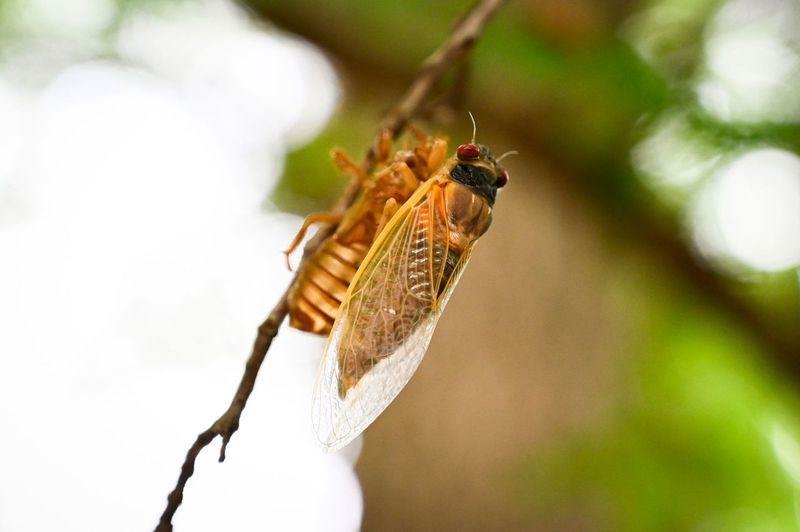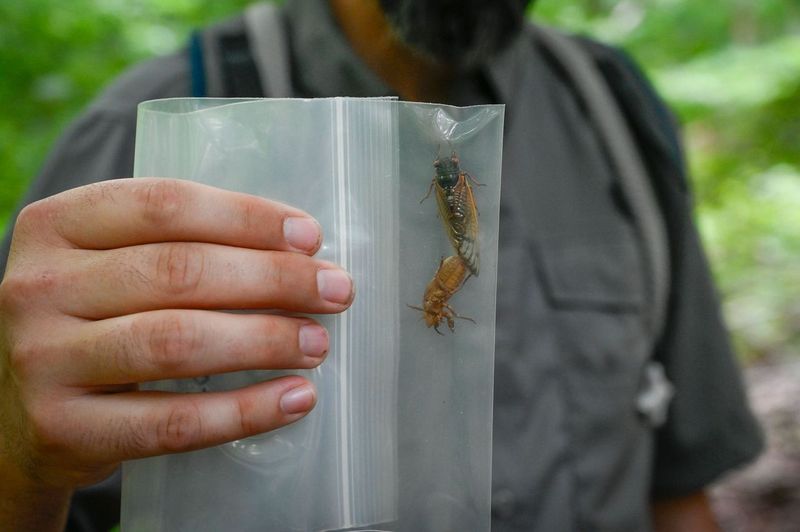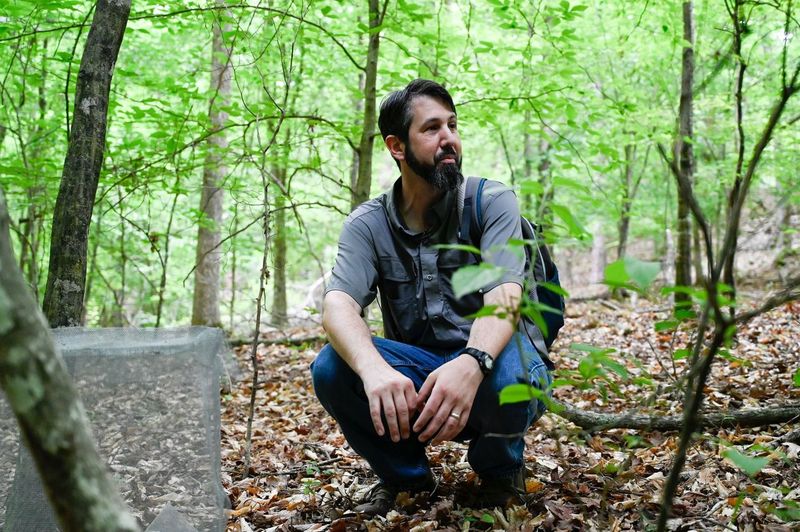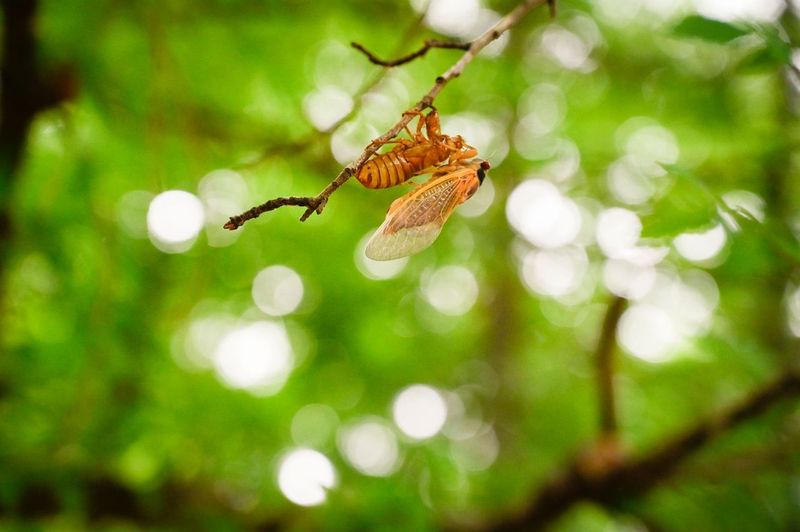Cicadas about to disappear for another 13 years—after hugely impacting ecosystem
S ome people love the red-eyed buzzing critters. Others can’t wait for them to go.
But for soil ecologists like Dr. Bruce Snyder, these last few weeks are a waning opportunity to learn more about periodical cicadas and the lasting impact they leave behind.

Soon, millions of cicadas from the Great Southern Brood XIX will go silent. They won’t be back until 2037.
“When they’re gone, they’re gone,” said Snyder recently, as he checked multiple wire cages and netted traps set in the woods at Georgia College & State University’s Biological Field Station at Lake Laurel.
An associate professor of biology, Snyder studies millipedes, earthworms and other invertebrates, like cicadas, which impact soil and forests.
“Timing is super important with this research. We only have a small window of time,” he said. “One of the big challenges of studying periodical cicadas is that in any one location you only get them every 13 or 17 years."
"It makes it more difficult to answer certain questions," he said. "It also means you have to plan ahead and have traps set out ahead of time.”
 Snyder checks his traps every day. He bags specimens of exoskeletons and cicadas to take back to the lab. He freezes them for preservation and future analysis.
Snyder checks his traps every day. He bags specimens of exoskeletons and cicadas to take back to the lab. He freezes them for preservation and future analysis.
He and his colleagues—Evan Lampert at the University of North Georgia and Mac Callaham with the U.S. Forest Service—hope to learn the impact cicadas make on forests and other organisms in the short time they’re here.
According to VOX, the brief appearance of periodical cicadas “shape forests for years to come.” As Snyder and his colleagues have theorized, many scientists believe periodical cicadas are a huge “binge feast” for all sorts of predators like birds, snakes, reptiles, spiders, even ants.
Cicadas are a good source of protein. Copperhead snakes “especially love them,” Snyder said.
This burst of easy protein sends a “ripple effect” throughout the ecosystem. VOX spoke with a zoologist at the University of California, Berkley, who noted more baby birds were born following a periodic cicada emergence in 2021.
In fact, birds were so satiated with cicadas, they ate fewer caterpillars.
This allowed the caterpillar population to explode. They ate more leaves. This led to more leaf damage in trees.
All because of one noisy little creature who shows up infrequently and stays a short while.

In Snyder’s research, he noticed microhabitats are just as important as temperature for determining when cicadas emerge.
Nymphs come out of the ground when soil 8 inches deep turns 64 degrees. But, oddly enough, they emerged in Central Georgia along the fall line before South Georgia, where they’re only now starting to appear. Snyder thinks that’s because they live near rivers there, where soil is colder.
“Between here and our other sites in Baldwin County, there's slight differences in timing,” Snyder said. “We won't really know more until we get into the data and actually identify all the specimens we've collected. But we're seeing some basic differences based on microhabitats.”
Snyder’s also studying the role cicadas play in regulating the amount of nitrogen in forests. He’ll examine specimens later this summer, measuring their biomass, carbon and nitrogen content.
This information will help him calculate “how much energy comes out of the ground” during a periodical cicada year. Where that energy goes is an important part of understanding how ecosystems function. Snyder wants to know how much energy cicadas expend during noise making, flying, crawling and reproducing.

“We're talking about millions of cicadas coming out, huge amounts of food for all kinds of organisms,” Snyder said. “We're trying to figure out which organisms eat cicadas and how the energy they absorb moves through the ecosystem.”
“We’re not able to track every piece of this,” he said. “We’re only quantifying a few steps in the process. It’s very difficult to track these sorts of things, because we have 13-year gaps in between to establish our research.”
For the next few weeks, Snyder will continue checking traps at Lake Laurel every day for cicadas—as the unique sounds from three species in the brood reverberate around him.
Then, once females cut a slit in an upper tree branch, lay their eggs and die, it’ll go quiet.
Six weeks later, eggs will hatch. Tiny nymphs will drop to the ground and burrow in, sucking sap from tree roots, unseen, for another 13 years.
